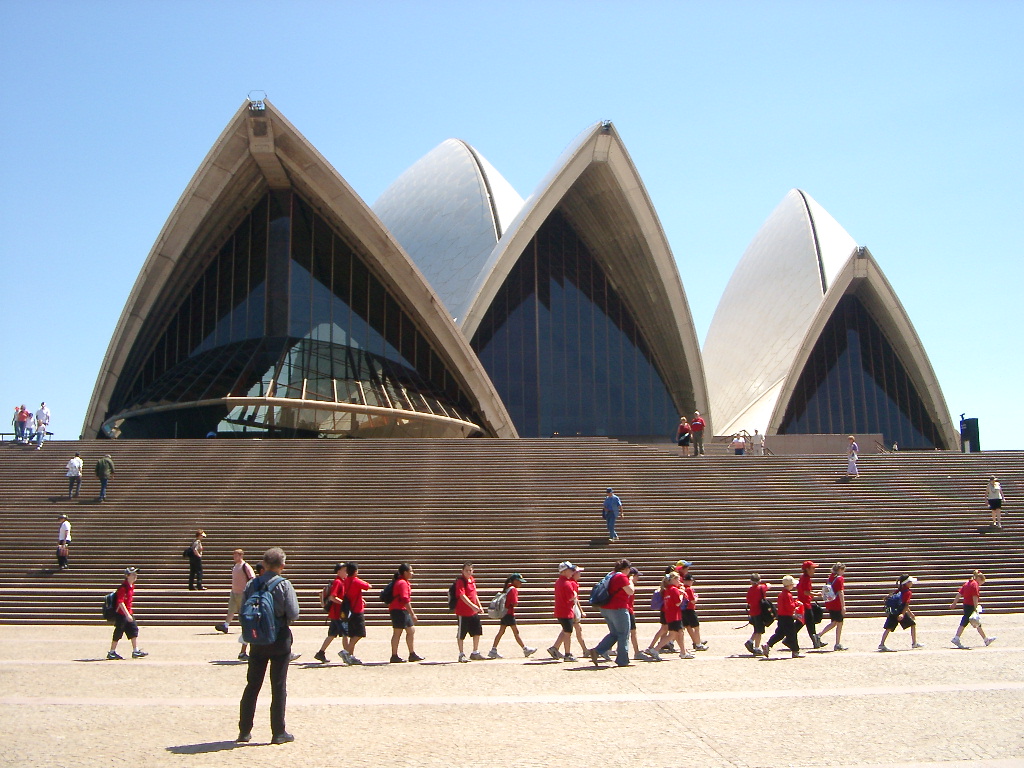The Sydney Opera House, with its distinctive sail-like shells, stands as an iconic symbol not only of Sydney but of Australia’s cultural identity. Nestled along the picturesque Sydney Harbour, this architectural marvel is renowned worldwide for its unique design, cultural significance, and contribution to the arts.

The concept of the Sydney Opera House can be traced back to the mid-20th century when an international design competition was launched in 1957 to create a new performing arts venue for Sydney. The winning design, submitted by Danish architect Jørn Utzon, was a groundbreaking vision that would change the architectural landscape forever. Utzon’s design, inspired by nature and the sea, featured a series of shell-like structures that collectively formed the iconic silhouette of the Opera House.
Construction of the Sydney Opera House commenced in 1959, and despite facing numerous challenges, including engineering complexities and budget overruns, it was officially opened in 1973. The Sydney Opera House is not merely a concert hall; it is a multi-venue performing arts center that hosts a diverse array of artistic and cultural events, ranging from opera and ballet to contemporary music and theater.
The Opera House’s most distinctive feature is its series of interlocking shell structures, which are often likened to sails billowing in the wind or, alternatively, the segments of an orange. These shells are constructed using precast concrete panels, and the unique design presented both engineering and construction challenges at the time. The result, however, is a breathtaking testament to human creativity and innovation.
The Sydney Opera House has not only become an architectural icon but a cultural hub that celebrates the performing arts in all their forms. Its Concert Hall, with its renowned Grand Organ, hosts classical music performances, while the Joan Sutherland Theatre is dedicated to opera and ballet. The Drama Theatre and Playhouse cater to theatrical productions, ensuring a diverse range of artistic expressions find a home within its iconic sails.
Beyond its role as a performance venue, the Sydney Opera House has become a symbol of Australia’s cultural identity. The building’s inclusion in the UNESCO World Heritage List in 2007 further solidified its status as a site of international significance. The distinctive design and breathtaking location along Sydney Harbour contribute to its allure as a global architectural masterpiece.
The Sydney Opera House’s cultural impact extends beyond its architectural and aesthetic appeal. It has become a symbol of unity and diversity, hosting events that celebrate Australia’s rich multicultural heritage. The annual Sydney Festival, which takes place at the Opera House, showcases a fusion of artistic disciplines and cultural influences, attracting audiences from around the world.
In conclusion, the Sydney Opera House is more than a building; it is a testament to human creativity, architectural innovation, and the power of the performing arts to bring people together. Its distinctive design, cultural significance, and role as a global symbol make it a jewel in the crown of Sydney and an enduring testament to the rich cultural tapestry of Australia. As it continues to inspire awe and captivate audiences, the Sydney Opera House remains an enduring testament to the harmonious fusion of art, architecture, and culture.



